Newsletter Articles from 2004
As Yates Mill was restored, Yates Mill Associates published and mailed paper newsletters to keep supporters informed of the progress and to share historical discoveries.
Here are some articles from 2004:
- Hopper Boy Construction Begins by William Robbins
- Old Yates Mill Painting in Need of Conservation
- Drive Gears for Bolter and Grain Cleaner Installed by William Robbins
- Barrel Packer/Flour Press Installed by William Robbins
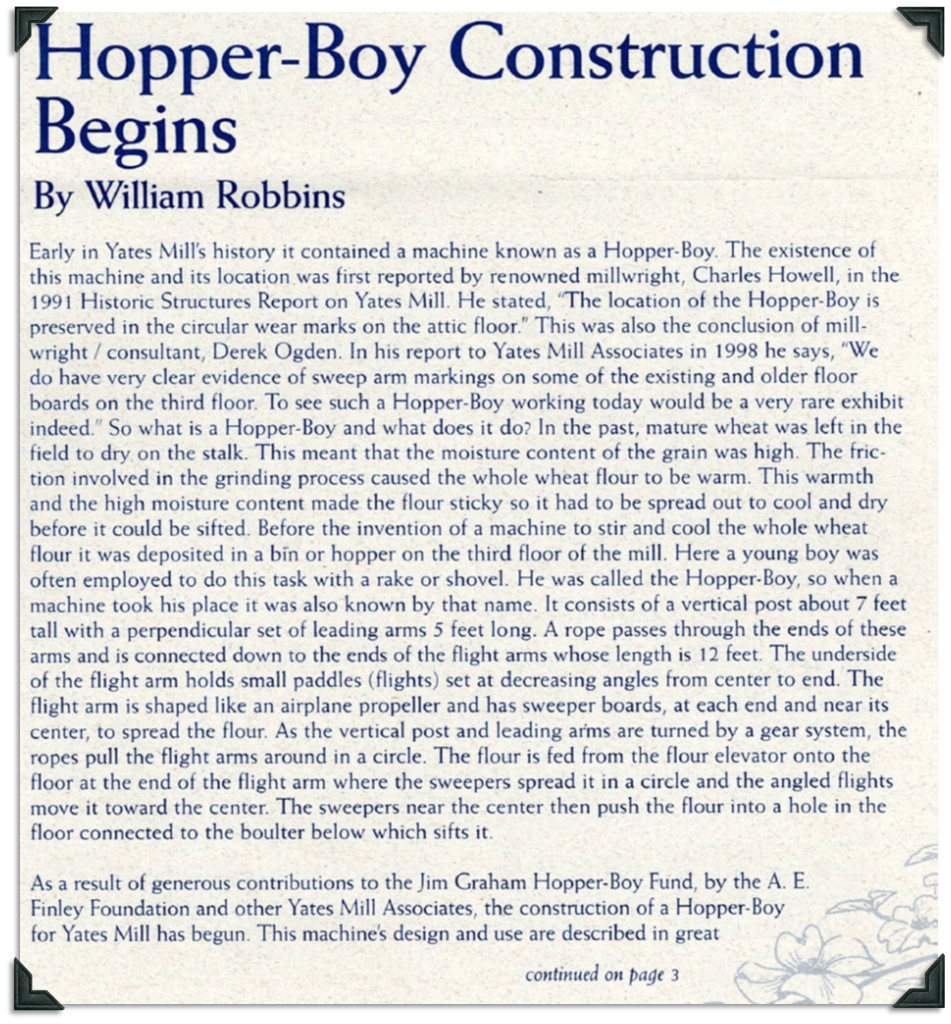

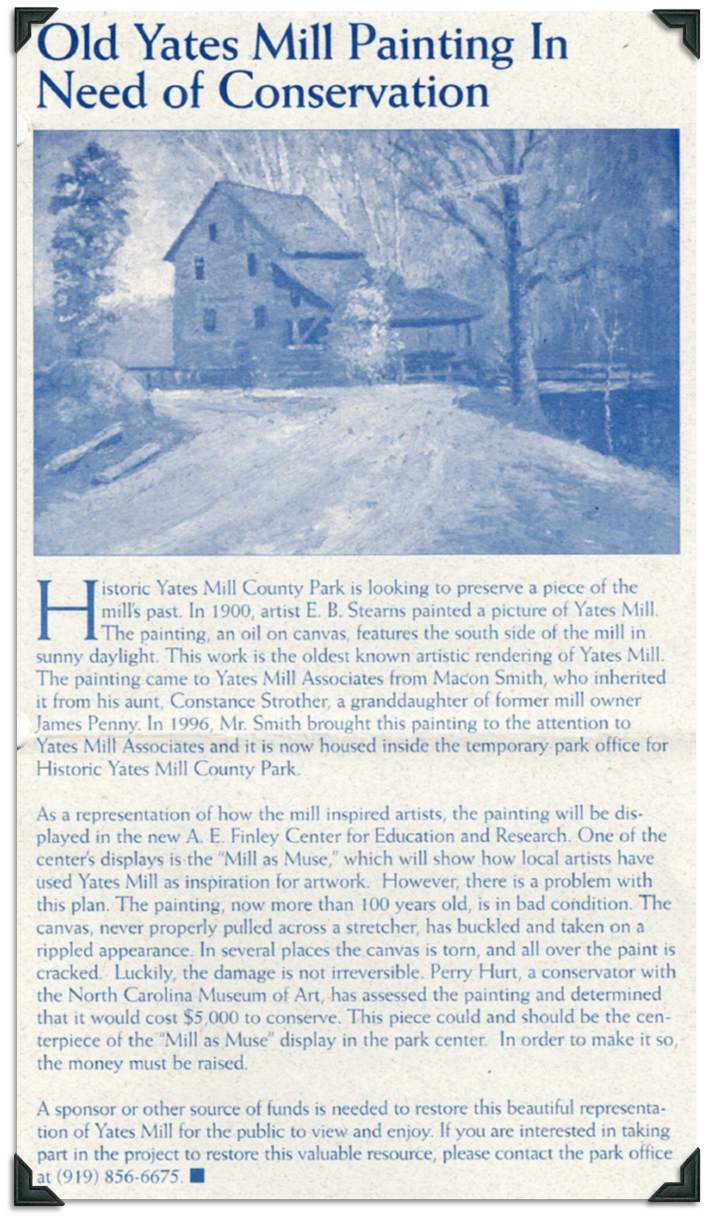
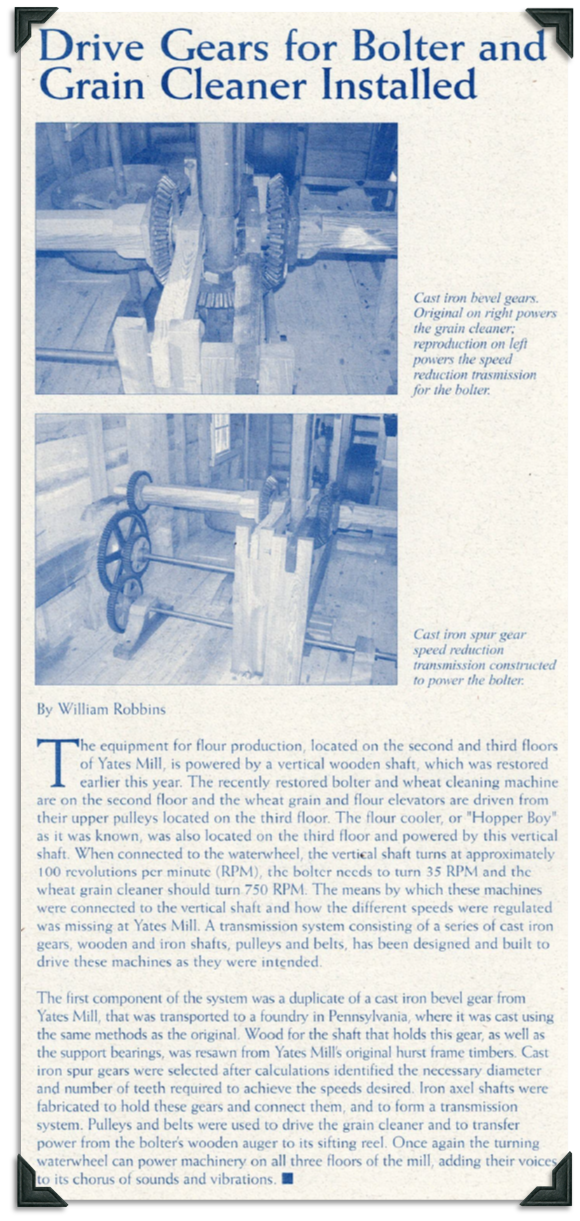
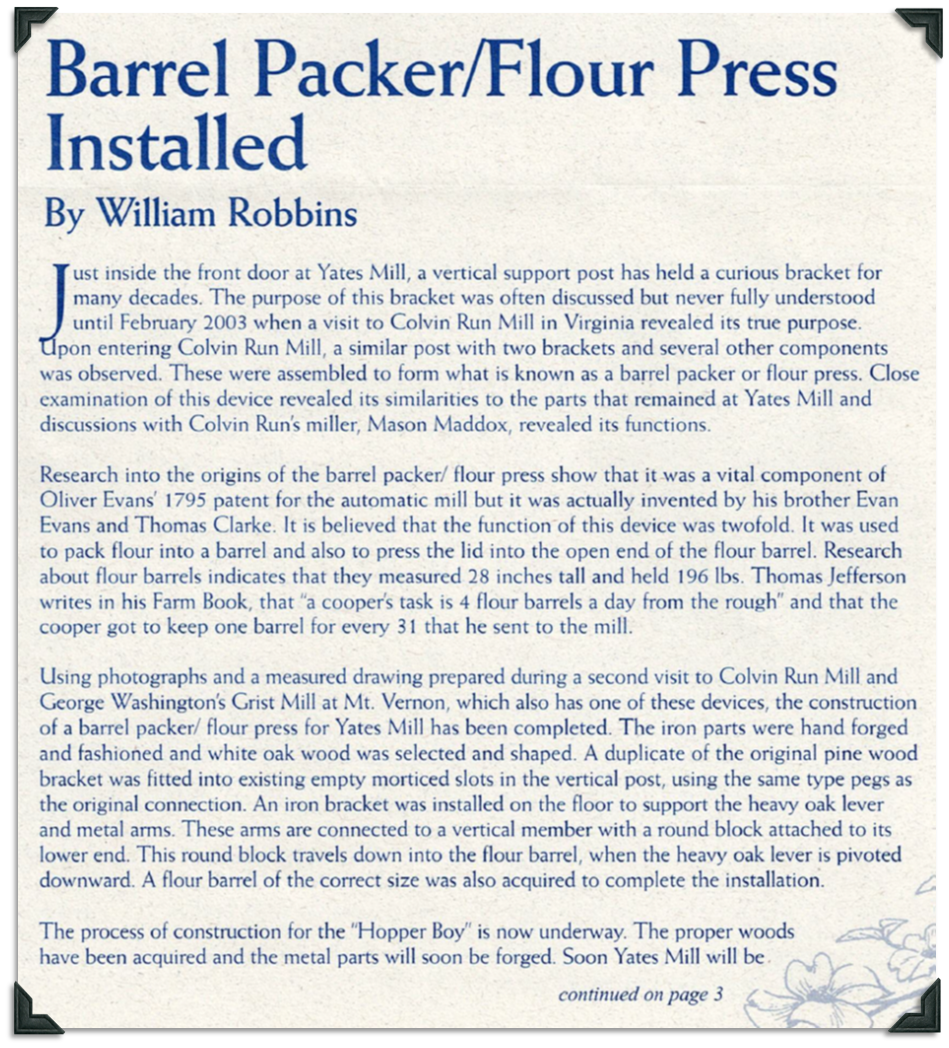
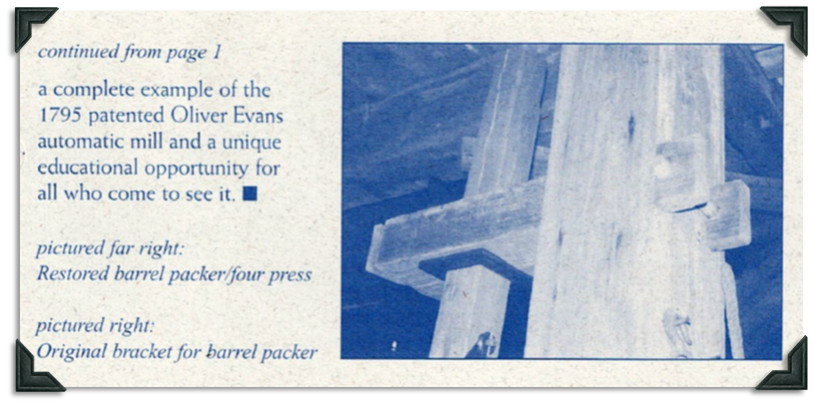
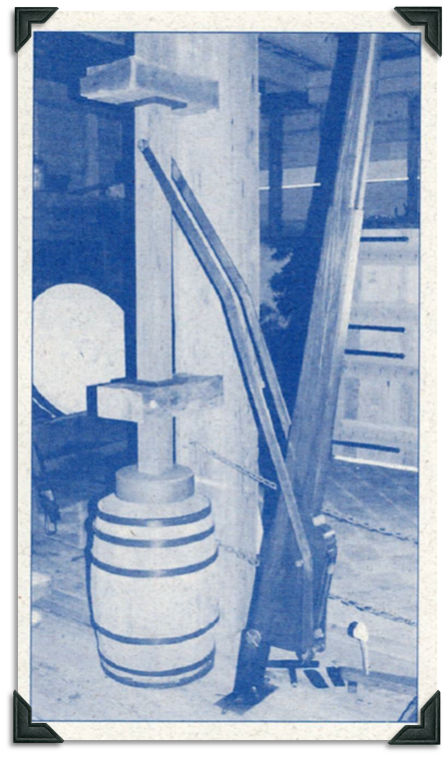
To see more information about the history of Yates Mill and the role Yates Mill Associates played in restoring the mill, visit the A.E. Finley Center at Historic Yates Mill County Park to see displays, view artifacts, and watch videos of the mill in action.
